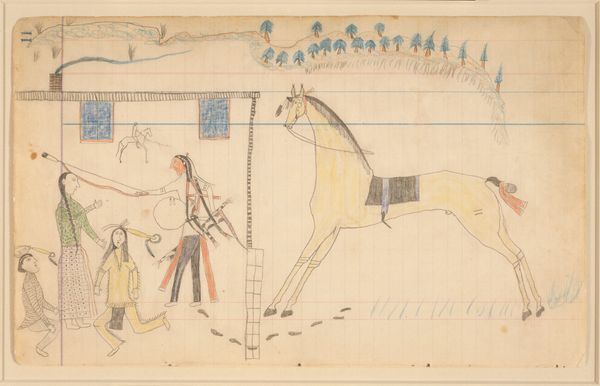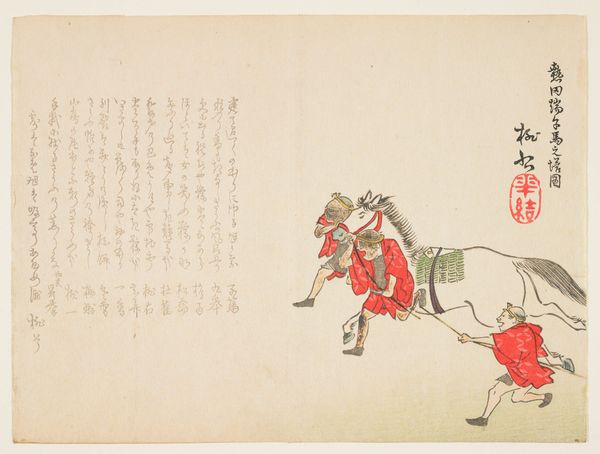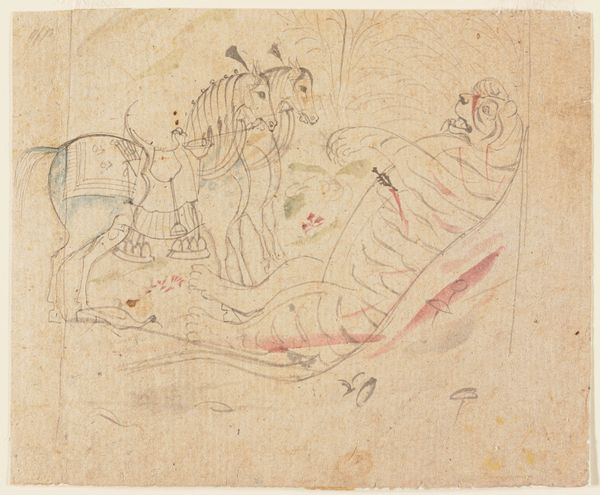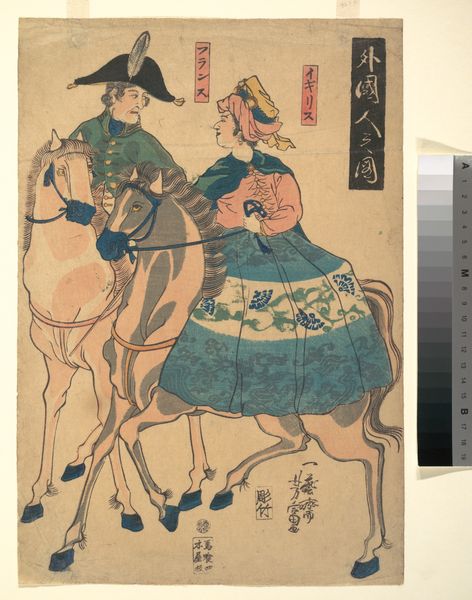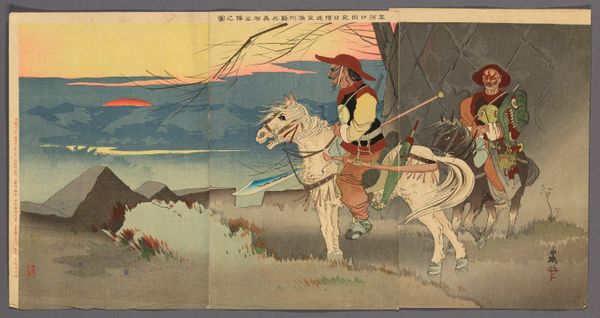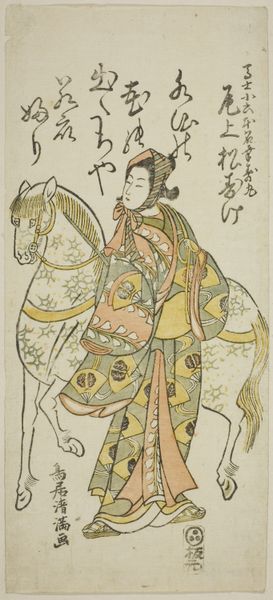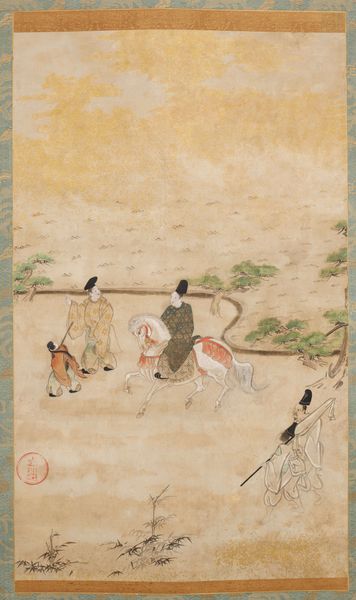
drawing, coloured-pencil, paper
#
drawing
#
coloured-pencil
#
narrative-art
#
figuration
#
paper
#
watercolor
#
indigenous-americas
Dimensions: 6 3/4 x 8 3/8 x 1/8 in. (17.15 x 21.27 x 0.32 cm) (closed)
Copyright: Public Domain
Editor: Here we have "Sketchbook," a drawing done in 1876, artist listed as Koba, located at the Minneapolis Institute of Art. It's quite simple; the lines seem deliberately raw, childlike almost. What strikes you about it? Curator: What jumps out to me is the deliberate simplicity, and the accessibility of materials, pencil and paper. This tells us something about artistic production outside established academies. Do we know the social context this was made in? Who was Koba, and who was the intended audience for these images? Editor: It is tagged as “indigenous-americas” which is intriguing. Given its creation date, could it be related to attempts at assimilation through education? The drawing almost looks like something created during that time. Curator: Precisely. The medium is crucial here. This is not an oil painting intended for a wealthy patron. This is likely a readily available sketchbook, perhaps even provided as part of government-funded schooling. The act of drawing, the materials used, become tools for shaping and perhaps even controlling narratives about indigenous people. How does the act of simple mark making inform the representation itself? Editor: So, the “narrative-art” tag isn't just about what’s depicted but the entire story of its creation, the labor, the intended consumption? Curator: Absolutely. The accessibility of the medium complicates traditional notions of high and low art, it allows us to consider how materials themselves participate in broader social structures and histories of labor and power. It challenges our ideas of the artist's agency and cultural representation. Editor: It definitely puts the focus on the "why" behind its existence, rather than just the "what" that is portrayed. Fascinating. I will remember to consider medium and creation context moving forward. Curator: Indeed, art-making, itself, can become a form of commentary. Considering materiality allows for more expansive cultural understanding.
Comments
minneapolisinstituteofart almost 2 years ago
⋮
A millennia old art form, Plains Indian drawings appear on rocks, hides, muslin, cloth, and paper. Drawings can depict a variety of subjects, including great accomplishments of individual men, important historical events, and ceremonial and daily life on the Plains. Kiowa artist Koba created a sketchbook while falsely imprisoned at Fort Marion, in St. Augustine, Florida. Held for three years (1875–1878) without trial, he then went to school in Virginia and Pennsylvania, as part of a government effort to assimilate Native people into Euro-American society. In 1880 he returned to his people in Oklahoma, only to die two weeks later of tuberculosis. His sketchbook portrays daily life when he was free and lived in Indian Country. In this buffalo-hunting scene, he included himself on horseback, to show his hunting prowess, and cleverly used both pages to indicate how many buffalo he had hunted.
Join the conversation
Join millions of artists and users on Artera today and experience the ultimate creative platform.



